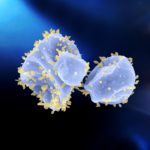Link to Pubmed [PMID] – 24990376
Nucleic Acids Res. 2014 Jul;42(13):8578-91
Type II DNA topoisomerases are divided into two families, IIA and IIB. Types IIA and IIB enzymes share homologous B subunits encompassing the ATP-binding site, but have non-homologous A subunits catalyzing DNA cleavage. Type IIA topoisomerases are ubiquitous in Bacteria and Eukarya, whereas members of the IIB family are mostly present in Archaea and plants. Here, we report the detection of genes encoding type IIB enzymes in which the A and B subunits are fused into a single polypeptide. These proteins are encoded in several bacterial genomes, two bacterial plasmids and one archaeal plasmid. They form a monophyletic group that is very divergent from archaeal and eukaryotic type IIB enzymes (DNA topoisomerase VI). We propose to classify them into a new subfamily, denoted DNA topoisomerase VIII. Bacterial genes encoding a topoisomerase VIII are present within integrated mobile elements, most likely derived from conjugative plasmids. Purified topoisomerase VIII encoded by the plasmid pPPM1a from Paenibacillus polymyxa M1 had ATP-dependent relaxation and decatenation activities. In contrast, the enzyme encoded by mobile elements integrated into the genome of Ammonifex degensii exhibited DNA cleavage activity producing a full-length linear plasmid and that from Microscilla marina exhibited ATP-independent relaxation activity. Topoisomerases VIII, the smallest known type IIB enzymes, could be new promising models for structural and mechanistic studies.






